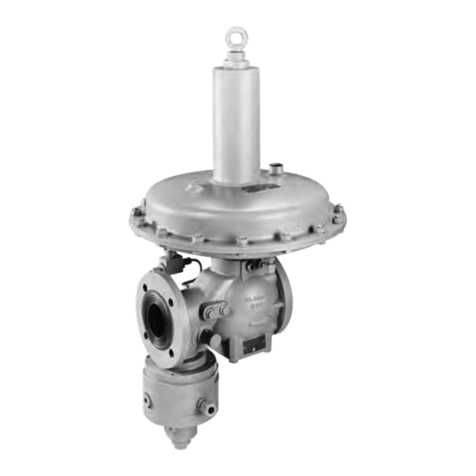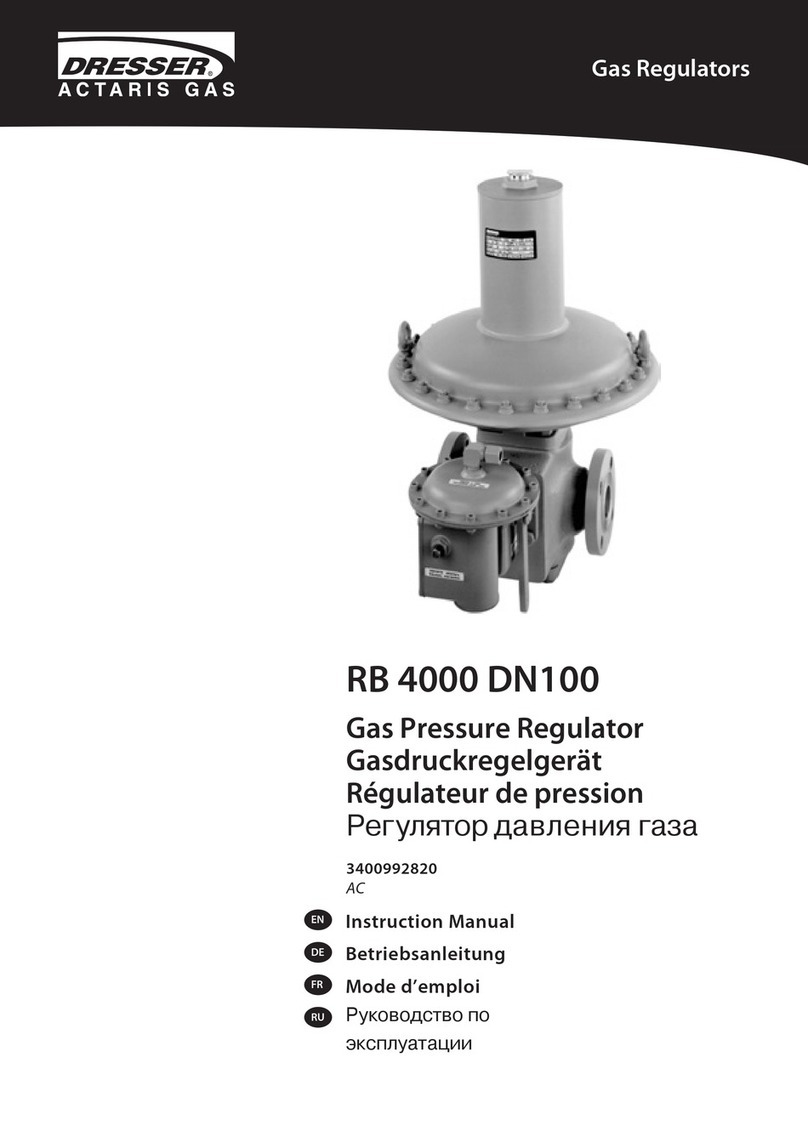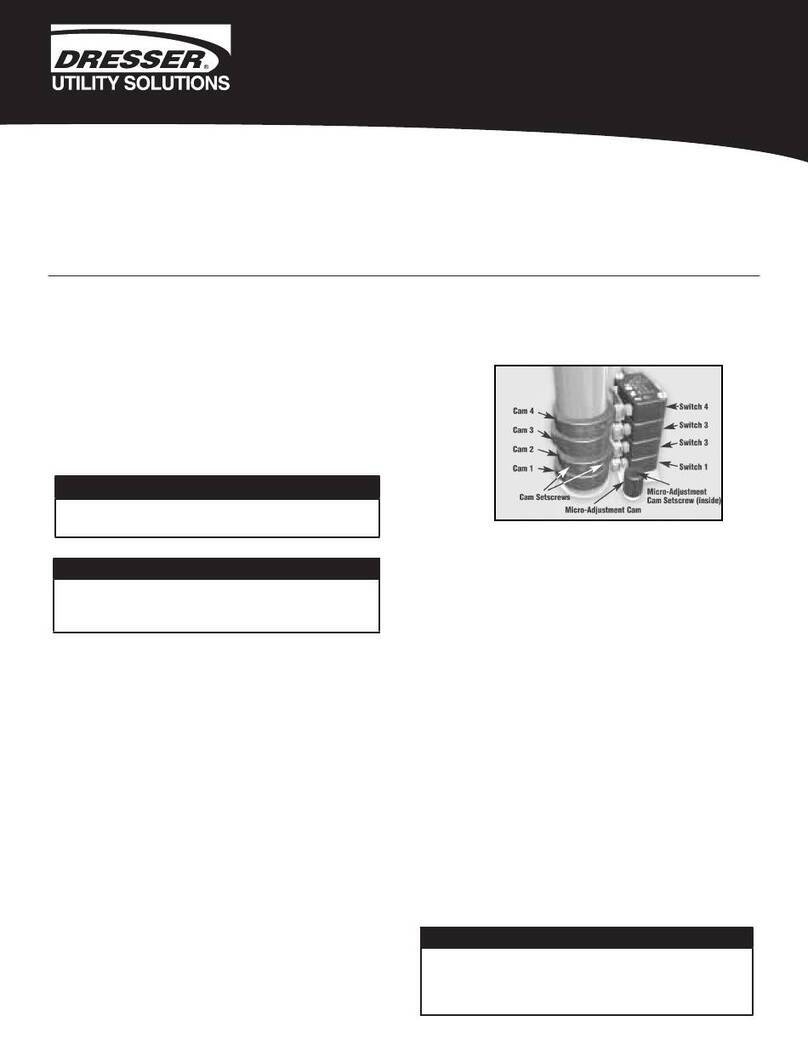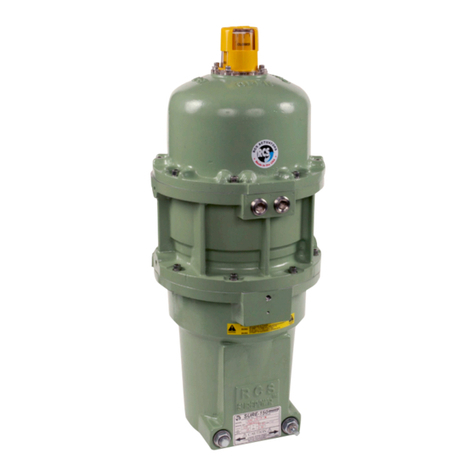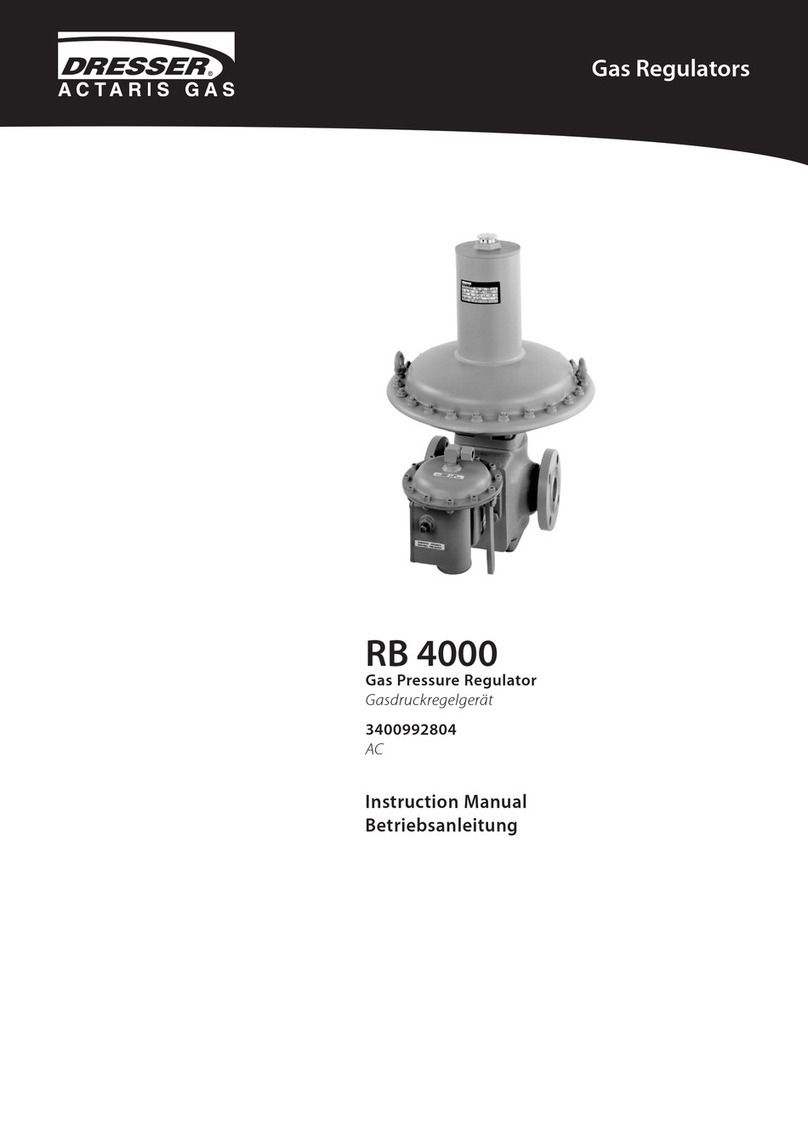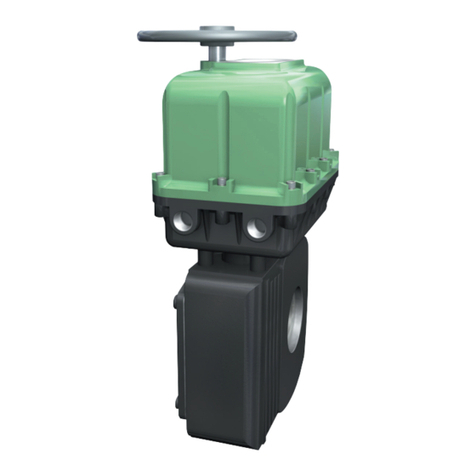
88
The 173-50 regulators comprise two groups of regulators:
Group 1 :
All the group 1 regulators have one diaphragm; one of the
controlled pressures acts under the diaphragm through an
internal sensing line connection while the other acts over the
diaphragm through a sensing line connection on the spring
housing. The plug is kept closed by the spring. The following
types belong to this group:
173-50 Single Diaphragm (see Fig. 9);
Group 2 :
All the group 2 regulators have two diaphragms separated
by a chamber communicating with the outside; the controlled
pressures act under the lower diaphragm (through an internal
sensing line connection) and over the upper diaphragm
(through a sensing line nipple on the spring housing). The
plug is kept closed by the spring.
The following types belong to this group:
173-50 Double Diaphragm (see Fig. 10);
4.3 Installation
4.3.1 All 173-50 regulators must be installed with the actuator
facing upwards and the diaphragm horizontal.
4.3.2 Installation diagrams.
In most cases the flow crosses the regulator as shown by the
arrow in Figs. 9 and 10.
The installation diagrams are therefore as follows:
4.3.3 - Group 1 regulators: Fig. 11
4.3.4 - Group 2 regulators: Fig. 12
4.3.5 Install an isolation valve upstream, downstream and
on the sensing and discharge line connection piping, in
order to service the regulator (if necessary) while the plant
is pressurized.
Install one filter or pressure gauge upstream from the
regulator and another one on the sensing line connection, as
shown in the diagrams, in order to calibrate the differential
pressure and keep it constantly under control.
4.3.6 Prior to installing the regulator in the piping, make
sure the inside of the pipes are clean and free of any debris
(machining cuttings, weld slag, etc.), especially the upstream
section; blow down the piping if possible to eliminate any
remaining dirt: small drops of weld slag may seriously
damage the regulator.
4.3.7 In group 2 regulators, the chamber between the two
diaphragms must be connected to piping to vent the discharge
to a suitable place, safely and constantly at atmospheric
pressure. This hole can be closed with a plug or pressure
gauge with an electrical contact for the remote signaling that
the diaphragm has broken, as long as the downstream plant
is protected as shown in the following.
4.3.8 If there is the slightest possibility of the pressure
upstream from the reduction regulator exceeding the
maximum admissible pressure for the installation, caused by
the failure of the overflow regulator, a safety relief valve must
be installed upstream, without an isolation valve in between,
in order to discharge the entire flow crossing the differential
pressure regulator.
4.3.9 Please keep in mind that the regulated pressure sensing
port is located inside the regulator, therefore the pressure
drops in the inter-connecting piping between the regulator
and the point of use will affect the accuracy of the maintained
set pressure. This pressure drop must be considered when
calculating the size of the connection
When it is essential to avoid pressure variations at the point
of use, the regulators are fitted with an external sensing line
connection, replacing the internal connection and fitted to
the lower flange of the actuator. This connection must be
connected as near as possible to the point of use where the
installation of a pressure gauge is also recommended.
4.4 Start-Up and Calibration (Figs. 9-10)
4.4.1 This operation is similar for both groups. The sensing
line connection regulator and the upstream and downstream
isolation valves must be closed. Slightly open the downstream
valve and then the upstream valve together with the sensing
line connection, making sure that the pressure difference read
on the pressure gauges is correct. If necessary, to decrease
it, turn the adjustment screw (18) clockwise to increase
differential pressure and counterclockwise to decrease.
When the required value is reached, fully open all the valves.
When the downstream system is working at full power,
calibrate by adjusting the screw (18).
4.5 Maintenance (Figs. 9-10)
4.5.1 The required maintenance interval will vary depending on
application. The user must establish a suitable maintenance
schedule depending on the operating conditions. Prior to
disassembly remove all system pressure from the regulator.
Before starting the above operation, make sure the recom-
mended spare parts are available (Figs.9-10, parts list).
4.5.2 Disassembly
Disassembling and reassembling operations for all types of
173-50 regulators as long as the diaphragms are considered.
These are:
- 1 single elastomeric diaphragm for 173-50 Single Diaphragm;
- 2 elastomeric diaphragms (one per side) for 173-50 Double
Diaphragm.
Make sure the spares match the above and take great care
when mounting the diaphragm assembly.
Instructions
EY0173 – 10/08
173 Series
Self-Operating Pressure Regulators
DV-216-173 series Inst-fnl.indd 8 11/20/08 9:30:07 AM

